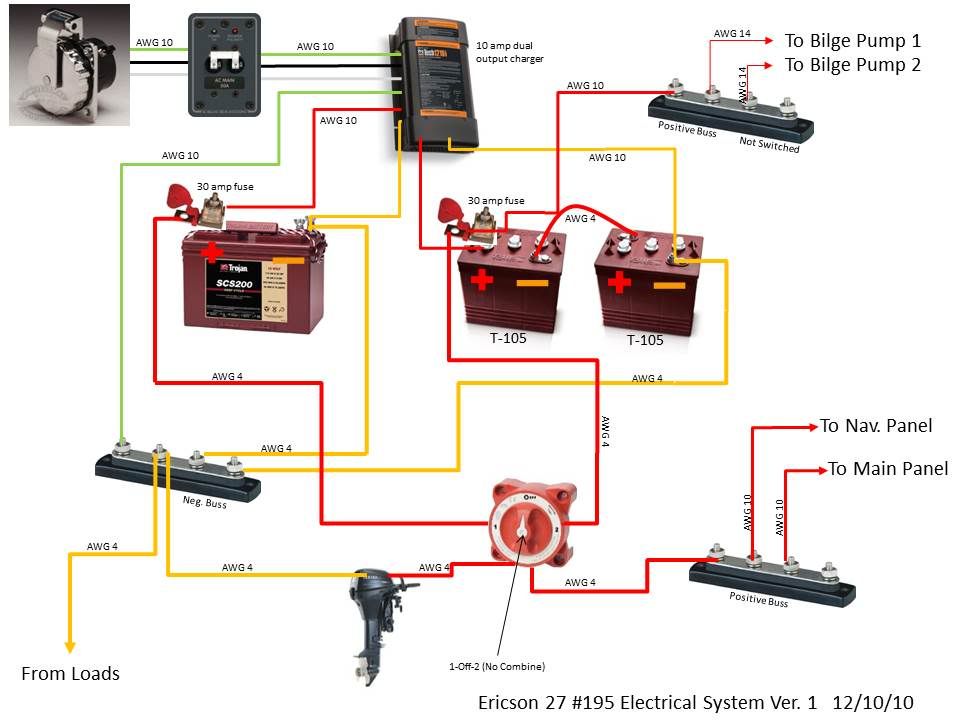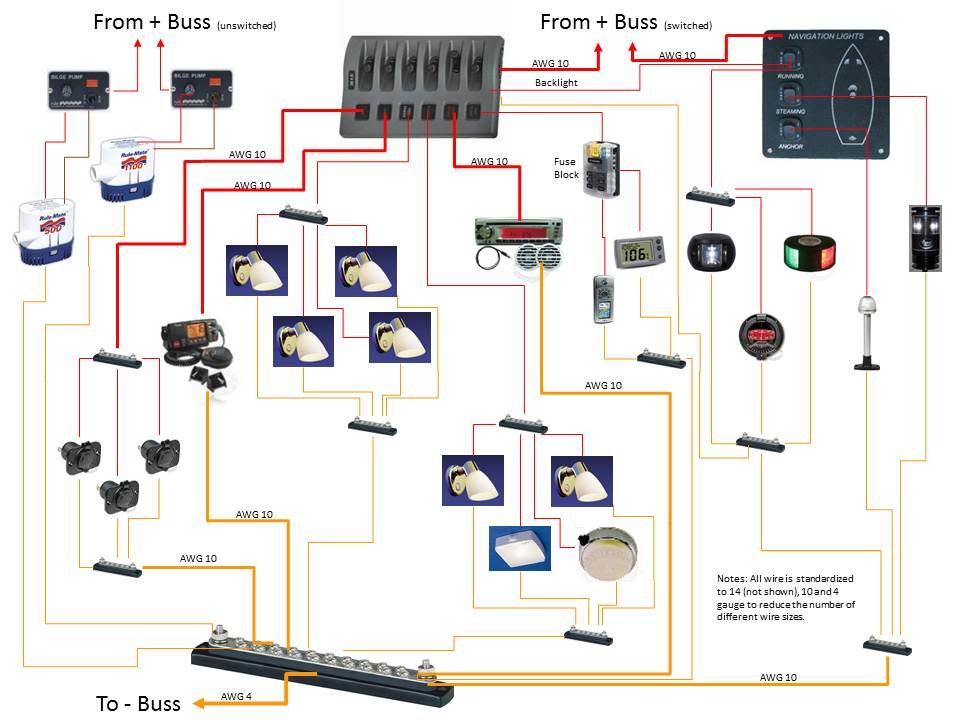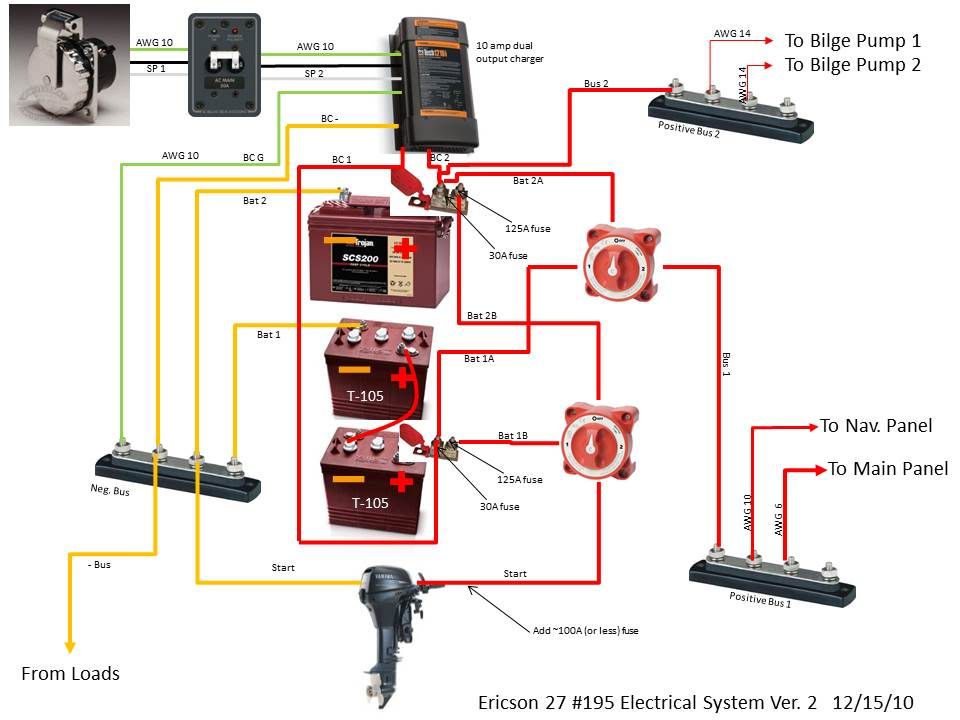I have an electrical system question. I am starting to plan my system and running into some confusion regarding grounding. I have no experience with boat wiring so I have consulted Casey's, Wing's, and Calder's books and various other sources (and searched here). And I am getting mixed messages-imagine that!
My system will be pretty basic- a house battery running nav lights, house lights, bilge pump, a couple 12v outlets, and instruments, and a dedicated starting battery for the outboard (electric start with a small generator/rectifier). However, here is the rub- since I have no inboard engine I don't have a main boat ground. I cant use the outboard since it will be tilted up when sailing and dockside. On the DC side this is not a big deal I intend to just isolate everything that's in the water. And I am pretty sure I can simply ground above-waterline things like the fuel tank and deck fill to the negative battery post to prevent static build up.
However, its on the AC side where I am having some doubts. The only AC I intend to have is a battery charger charging both batteries. However I understand that simply connecting the battery charger to a dockside GFCI with an extension cord is asking for trouble, and that I should be installing a proper shorepower AC setup (however small) that will at least run the charger. However the three books I have read assume an inboard engine and that I should be connecting the green grounding wire from the AC side to the boat ground in case the charger has an issue and becomes "hot" (and then dealing with the galvanic corrosion issues). But since I don't have a boat ground, what should I do? The only concrete advice I have found in this regard is from EZ AC/DC on their website instruction for their all-in one AC panels where they say I can connect the green AC grounding wire to the negative battery terminal but I have not seen that anywhere else.
If anyone has any advice I would like to hear it (including telling me to go and hire a professional cause I have no clue what i am talking about and I'm liable to kill someone).
Thanks,
Doug
My system will be pretty basic- a house battery running nav lights, house lights, bilge pump, a couple 12v outlets, and instruments, and a dedicated starting battery for the outboard (electric start with a small generator/rectifier). However, here is the rub- since I have no inboard engine I don't have a main boat ground. I cant use the outboard since it will be tilted up when sailing and dockside. On the DC side this is not a big deal I intend to just isolate everything that's in the water. And I am pretty sure I can simply ground above-waterline things like the fuel tank and deck fill to the negative battery post to prevent static build up.
However, its on the AC side where I am having some doubts. The only AC I intend to have is a battery charger charging both batteries. However I understand that simply connecting the battery charger to a dockside GFCI with an extension cord is asking for trouble, and that I should be installing a proper shorepower AC setup (however small) that will at least run the charger. However the three books I have read assume an inboard engine and that I should be connecting the green grounding wire from the AC side to the boat ground in case the charger has an issue and becomes "hot" (and then dealing with the galvanic corrosion issues). But since I don't have a boat ground, what should I do? The only concrete advice I have found in this regard is from EZ AC/DC on their website instruction for their all-in one AC panels where they say I can connect the green AC grounding wire to the negative battery terminal but I have not seen that anywhere else.
If anyone has any advice I would like to hear it (including telling me to go and hire a professional cause I have no clue what i am talking about and I'm liable to kill someone).
Thanks,
Doug



